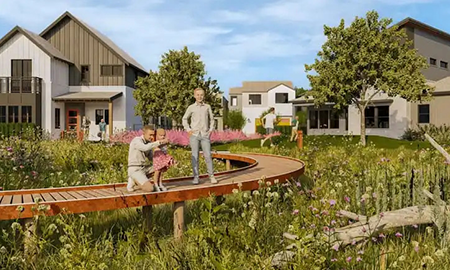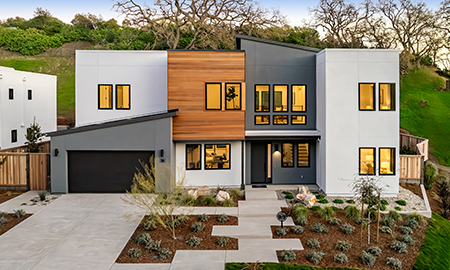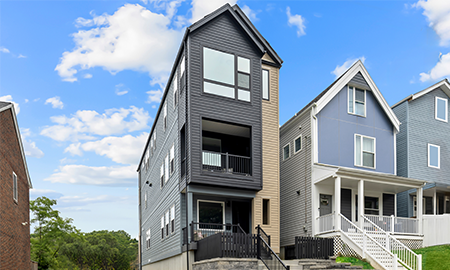About the Panel Discussion
As planners and architects, it is our practice to design homes that understand and respond to the existing fabric of a neighborhood. While zoning regulations and design guidelines define the framework we must work within, placemaking guides how we design within the framework to enhance the neighborhood and community that is already there. From this solutions-based perspective, Senior Principal and Senior Architect Lauri Moffet-Fehlberg moderates a focused discussion with Director of Design Ryan White and Senior Planner Ritu Raj Sharma on the legislation and what we believe the impact to neighborhood character and stability may be.
See below for a few project examples we believe demonstrate contextually appropriate design of increasing density within single-family neighborhoods.
In Harmony: New Expressions Fit for a Historic Neighborhood

With Seattle encouraging density in communities close to downtown, the redevelopment of McGraw Square at Queen Anne demonstrates successful design approaches to increasing residential density at a city block scale. As with so many older city neighborhoods, McGraw Square faced a variety of site and edge conditions that required creative design integration, from the renovation of a school building dating back to the 1800s to the preservation of mature, on-site trees within an historic neighborhood of cobblestone streets. Overcoming difficult site grades and overlapping city regulations, the unique mixed character and expression of architecturally classic and contemporary townhomes were seamlessly integrated into this historic Seattle neighborhood.

Micro Lots Offer Density Next to Transit

Located across the street from Caltrain Station 361 in downtown Mountain View, this infill neighborhood replaces outdated concrete office tilt-ups with affordable, small lot homes and townhomes, that recall the eclectic character of early California 1920s and '30s neighborhoods. In particular, micro lots with two- and three-story micro homes with single car garages, are mixed into the neighborhood offering "affordable by design" housing. The product increases the overall density of the single-family neighborhood without impacting the visual scale and character of the surrounding community.
Increasing Density with Accessory Dwelling Units

Our current housing inventory is an echo; it's an artifact of a different time in our history. The Link concept looks at removing barriers to affordable and accessible housing by creating a multigenerational community that challenges some of the current thoughts on how we live in neighborhoods today. Across three single-family lots in Cleveland's Old Brooklyn neighborhood, the study evaluates the transferability and increase of density with consideration of modular home construction applied to accessory dwelling units. The respect of existing neighborhood character is met with new ideas on how to build healthy, social neighborhood engagement and interaction.












